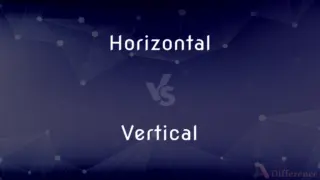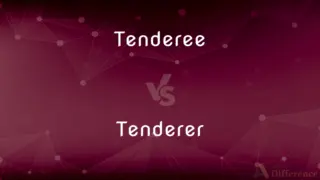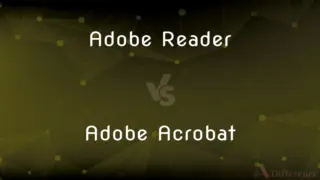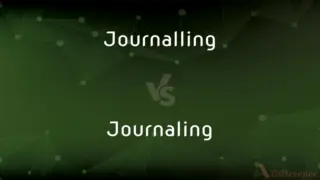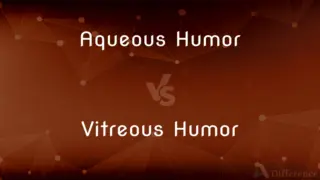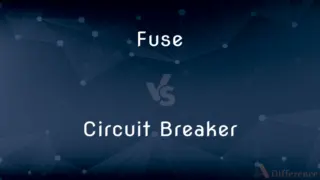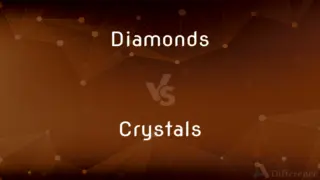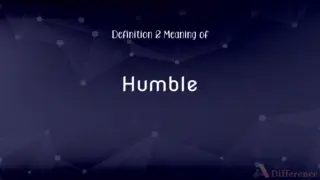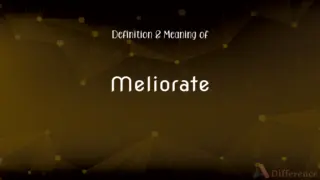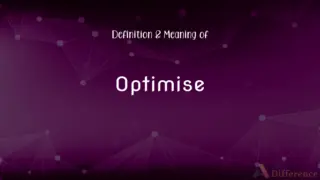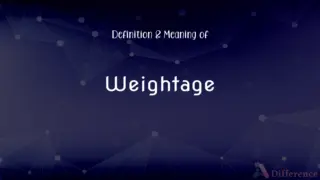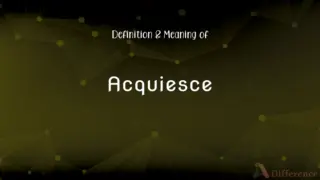Elliptical vs. Ellipsoid — What's the Difference?
By Urooj Arif & Fiza Rafique — Updated on March 2, 2024
An elliptical shape refers broadly to an oval or flattened circle, often used to describe orbits or 2D figures, while an ellipsoid is a 3D shape, resembling an elongated sphere.

Difference Between Elliptical and Ellipsoid
Table of Contents
ADVERTISEMENT
Key Differences
An elliptical shape is primarily two-dimensional, resembling an oval, and is defined by its elongated circular form. It is commonly used to describe the shape of orbits in astronomy, as well as in various mathematical and physical contexts where a flattened circle is observed. On the other hand, an ellipsoid extends this concept into three dimensions, resulting in a shape that can be thought of as a stretched or squashed sphere. This distinction between dimensions is crucial; while an elliptical shape is flat, an ellipsoid is volumetric.
The mathematical description of an elliptical shape involves equations that define its curvature and dimensions in a two-dimensional plane, focusing on the major and minor axes that dictate its length and width. Meanwhile, an ellipsoid requires a three-dimensional approach, incorporating an additional axis (the z-axis) to describe its depth, leading to a more complex set of equations that account for its three-dimensional geometry.
Eliptical shapes are often seen in the paths of celestial bodies (e.g., the orbits of planets around the sun), which, when observed from a two-dimensional perspective, appear oval. Ellipsoids, however, are used to model objects that have three-dimensional depth, such as the shape of the Earth, which is often described as an oblate ellipsoid due to its slight flattening at the poles and bulging at the equator.
Another key difference lies in how these shapes are used in various fields. Elliptical shapes are frequently used in optics and engineering to describe the cross-sections of beams or mirrors, for instance. Ellipsoids find application in geodesy and geography, where they serve as models for the Earth's shape for precise mapping and satellite navigation systems.
The choice between using an elliptical shape or an ellipsoid depends on the dimensionality of the problem or object being described. An elliptical shape suffices for flat, two-dimensional representations, while an ellipsoid is necessary for accurate modeling of three-dimensional forms.
ADVERTISEMENT
Comparison Chart
Dimensions
Two-dimensional (2D)
Three-dimensional (3D)
Definition
An oval or flattened circle
A stretched or squashed sphere
Mathematical Description
Equations define curvature in a plane
Equations account for three axes
Practical Applications
Orbits, optics, engineering
Geodesy, geography, 3D modeling
Examples
Planetary orbits, elliptical mirrors
Earth’s shape, ellipsoidal objects
Compare with Definitions
Elliptical
Defined by its major and minor axes.
The elliptical mirror was designed to focus light more efficiently.
Ellipsoid
Used in precise mapping and satellite navigation.
Geographers use an ellipsoid model to account for Earth’s curvature.
Elliptical
Often used to describe the geometric shape of objects and paths.
The racetrack had an elliptical shape, favoring speed over distance.
Ellipsoid
Has applications in physics, geodesy, and 3D modeling.
The study involved calculating volumes using ellipsoid formulas.
Elliptical
Can represent the cross-section of a 3D object.
The elliptical cross-section of the cylinder was evident in the design.
Ellipsoid
A 3D shape, similar to a stretched sphere.
The Earth is often modeled as an oblate ellipsoid due to its rotation.
Elliptical
Seen in various physical and mathematical contexts.
The diagram illustrated the elliptical patterns of motion.
Ellipsoid
Reflects the volumetric properties of objects.
The sculpture was an ellipsoid, capturing light from every angle.
Elliptical
A 2D shape resembling an elongated circle.
The elliptical orbit of the planet showcases its path around the sun.
Ellipsoid
Characterized by three perpendicular axes.
The ellipsoid had its longest axis aligned horizontally.
Elliptical
Of, relating to, or having the shape of an ellipse.
Ellipsoid
An ellipsoid is a surface that may be obtained from a sphere by deforming it by means of directional scalings, or more generally, of an affine transformation. An ellipsoid is a quadric surface; that is, a surface that may be defined as the zero set of a polynomial of degree two in three variables.
Elliptical
Containing or characterized by ellipsis.
Ellipsoid
A geometric surface, all of whose plane sections are either ellipses or circles.
Elliptical
Of or relating to extreme economy of oral or written expression.
Ellipsoid
A surface whose plane sections are all ellipses or circles;
The Earth is an ellipsoid
Elliptical
Marked by deliberate obscurity of style or expression.
Elliptical
In a shape of, or reminding of, an ellipse; oval.
Elliptical
Containing or characterized by ellipsis;
The clause of comparison is often elliptical
Elliptical
Characterized by extreme economy of expression or omission of superfluous elements;
The dialogue is elliptic and full of dark hints
The explanation was concise, even elliptical to the verge of obscurity
Common Curiosities
What is the main difference between elliptical and ellipsoid?
The main difference is dimensionality: elliptical shapes are 2D, while ellipsoids are 3D.
Why are planetary orbits described as elliptical, not ellipsoidal?
Orbits are plotted in two dimensions (plan view), making the elliptical description more appropriate.
Can an ellipsoid be considered elliptical?
Yes, in a sense, because it extends the concept of an ellipse into three dimensions.
Are all ellipsoids symmetrical?
Yes, ellipsoids are symmetrical around their three principal axes.
Why is the Earth described as an ellipsoid?
Because of its three-dimensional shape with a slight flattening at the poles and bulging at the equator.
Can an elliptical shape have three axes?
No, an elliptical shape is defined by two axes (major and minor), as it is 2D.
What role do ellipsoids play in geodesy?
Ellipsoids serve as models for the Earth's shape, aiding in accurate map making, surveying, and satellite navigation.
Do ellipsoids have to be perfectly symmetrical?
While they are symmetrical around their axes, the lengths of these axes can vary, leading to different forms of ellipsoids.
How do you determine if a shape is elliptical or an ellipsoid?
By examining whether the shape is flat (2D) or has volume (3D).
How are the axes of an ellipsoid defined?
They are defined as the three perpendicular lines (a, b, c) that intersect at the ellipsoid's center, dictating its length, width, and depth.
What is an example of an elliptical orbit?
The orbit of Mars around the Sun is an example, as it deviates from a perfect circle.
How are elliptical shapes used in engineering?
They are used in designing components like mirrors, lenses, and structural elements that require specific light or stress distribution patterns.
Can the term "elliptical" refer to anything outside of geometry?
Yes, it can describe anything that resembles or pertains to an ellipse, including orbits and paths.
How does rotation affect the shape of an ellipsoid?
Rotation can cause the equatorial bulge, making objects like Earth more ellipsoidal due to centrifugal force.
Is it possible for an object to be both elliptical and an ellipsoid?
An object can have elliptical cross-sections and still be an ellipsoid, depending on the perspective.
Share Your Discovery

Previous Comparison
King vs. Queen
Next Comparison
Insight vs. ReflectionAuthor Spotlight
Written by
Urooj ArifUrooj is a skilled content writer at Ask Difference, known for her exceptional ability to simplify complex topics into engaging and informative content. With a passion for research and a flair for clear, concise writing, she consistently delivers articles that resonate with our diverse audience.
Co-written by
Fiza RafiqueFiza Rafique is a skilled content writer at AskDifference.com, where she meticulously refines and enhances written pieces. Drawing from her vast editorial expertise, Fiza ensures clarity, accuracy, and precision in every article. Passionate about language, she continually seeks to elevate the quality of content for readers worldwide.

